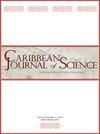入侵掠食性物种的空间生态学为牙买加岩鬣蜥(Cyclura collei)的捕食者控制计划提供信息
IF 0.5
4区 生物学
Q4 BIODIVERSITY CONSERVATION
引用次数: 1
摘要
摘要外来入侵物种(IAS)是导致岛屿物种灭绝和数量下降的主要原因。小印度猫鼬(Urva auropunctata)等来自IAS的捕食使极度濒危的牙买加岩鬣蜥(Cyclura collei)濒临灭绝。历史和正在进行的保护工作使今天的成年大熊猫数量恢复到500到600只。尽管进行了严密的控制,国际入侵组织对核心地区的入侵仍然很常见,阻碍了自然人口的补充。为了提高我们对IAS的管理和理解,我们调查了牙买加岩鬣蜥范围内IAS的空间使用情况。研究人员用甚高频(VHF)和全球定位系统(GPS)发射器对17只猫鼬和猫进行了长达72天的跟踪。对所有IAS进行了一些空间分析,并计算了13个人的家乡范围。VHF跟踪猫鼬和猫的平均100%最小凸多边形(MCP)范围分别为25.7公顷和23.9公顷。GPS追踪猫的平均100% MCP、95%核密度估计(KDE)和50% KDE家庭范围估计分别为78.2 ha、80.3 ha和21.6 ha。IAS的平均距离长度(两个最远点之间的距离)为979.2 m。追踪隧道也被利用,在鬣蜥核心区内外发现了几乎相同数量的猫鼬踪迹。我们的研究结果建议使用100米的网格间隔设置陷阱,并在核心保护区周围引入缓冲区来限制IAS的入侵。建议的修改有望减轻IAS对牙买加岩鬣蜥种群的影响,提高孵化存活率,并促进自然种群的补充和增长。本文章由计算机程序翻译,如有差异,请以英文原文为准。
Spatial Ecology of Invasive Predatory Species Informs Predator Control Program for the Jamaican Rock Iguana (Cyclura collei)
Abstract Extinctions and population decline of species on islands are often attributed to invasive alien species (IAS). Predation from IAS, such as the Small Indian Mongoose (Urva auropunctata) drove the Critically Endangered Jamaican Rock Iguana (Cyclura collei) to near extinction. Historical and ongoing conservation efforts have restored the population to 500 to 600 adults today. Despite intensive control, IAS incursions into the core area remain common, preventing natural population recruitment. To improve our management and understanding of IAS, we investigated IAS spatial use within the range of the Jamaican Rock Iguana. Seventeen mongooses and cats were tracked with Very High Frequency (VHF) and Global Positioning System (GPS) transmitters for up to 72 days. Several spatial analyses were performed for all IAS, and home ranges were calculated for 13 individuals. Average 100% Minimum Convex Polygon (MCP) home range for VHF tracked mongoose and cats were 25.7 ha and 23.9 ha, respectively. Average 100% MCP, 95% Kernel Density Estimate (KDE), and 50% KDE home range estimates for GPS tracked cats were 78.2 ha, 80.3 ha, and 21.6 ha, respectively. Average IAS range length (distance between the two farthest points) was 979.2 m. Tracking tunnels were also utilized and revealed nearly equal numbers of mongoose tracks inside and outside the iguana core zone. Our results suggest the use of 100 m grid spacing for traps and the introduction of a buffer zone surrounding the core protected zone to restrict IAS incursions. The suggested modifications are expected to mitigate the effects of IAS on the Jamaican Rock Iguana population, improve hatchling survival, and facilitating natural population recruitment and growth.
求助全文
通过发布文献求助,成功后即可免费获取论文全文。
去求助
来源期刊

Caribbean Journal of Science
综合性期刊-生物多样性保护
CiteScore
1.00
自引率
25.00%
发文量
21
审稿时长
>12 weeks
期刊介绍:
The Caribbean Journal of Science publishes articles, research notes, and book reviews pertinent to natural science of the Caribbean region. The emphasis is on botany, zoology, ecology, conservation biology and management, geology, archaeology, and paleontology. The mission as a nonprofit scholarly journal is to publish quality, peer-reviewed papers and to make them widely available.
 求助内容:
求助内容: 应助结果提醒方式:
应助结果提醒方式:


